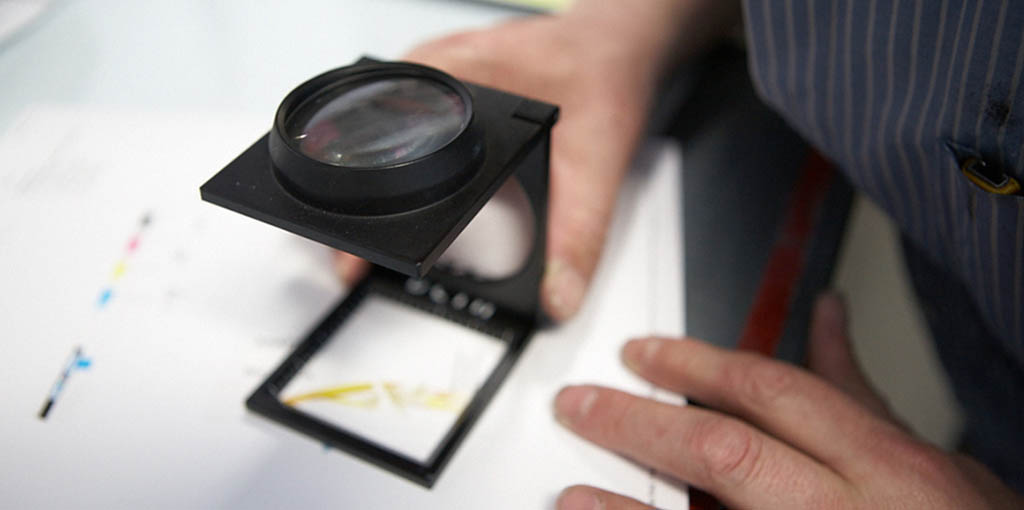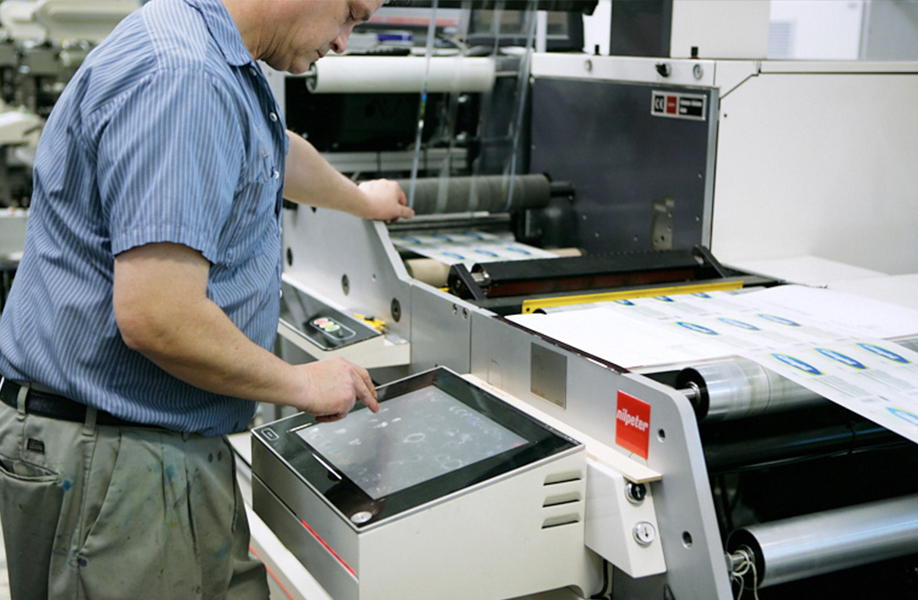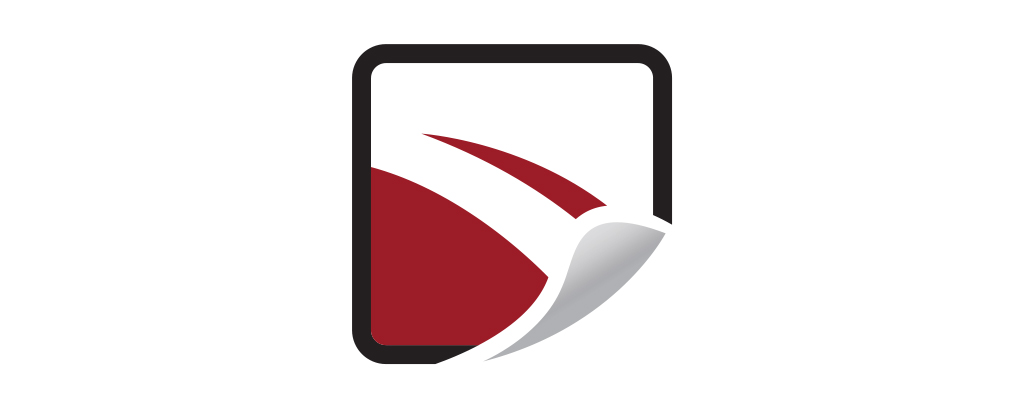Protecting label quality: Does your converter have these control measures in place?

Every label converter will boast of their commitment to quality control — such innocuous phrasing is simple to toss into procurement conversations, slip into a company slogan or use to assuage the concerns of your brand’s QC manager.
But what does quality control actually look like for your label converter? And more importantly, how can you as a brand owner verify that it’s valued not just in phrasing, but in practice?
Today we will discuss quality control measures related to the production of your labels. We’ll share advice for finding a true quality-driven partner that will make sure proofs perfectly match the approved artwork, colors are razor-sharp and every label that makes it to your facility is ready for application.
Ultimately, most quality control measures will take place behind the scenes. But as an invested brand owner, it’s in your best interest to understand how your labeling partner plans to execute QC procedures.
You can play an active role by:
- Asking about your printer’s QC process during production.
- Verifying their commitment to continuous improvements in QC technology and processes.
- Doing your part on the back end by thoroughly inspecting shipments, storing labels safely and setting up equipment properly.
- Working with a converter that uses a consultative sales process with quality checks throughout procurement.
By following through on these four steps, you can make sure your labeling vision is executed with the utmost precision and prevent quality issues from getting in the way of your brand’s success.
(And remember quality control doesn’t happen in a bubble: Get guidance on confirming quality in other stages of the procurement process such as bidding, pre-press and the search for a labeling partner).
1. Baseline quality control measures during production
The quality control process during printing will differ from converter to converter. But there are industry-standard checkpoints in which errors can be caught (and fixed) so the labels shipped to your facility are exactly what you envisioned.
Here’s what your label converter’s fundamental quality control measures should include.
Before printing begins, checks are performed at the quality assurance (QA) station
Comparison with approved artwork: The operator will run down the artwork and compare the press sheet to your approved artwork. This may be done with a system (such as Global Vision) that digitizes the press sheet and points out discrepancies, or done manually where an operator looks at the approved artwork and the proof and catches any inconsistencies with a trained eye.
Color consistency and accuracy check: A spectrodensitometer will scan all colors used (each printed in a small square on the side of the web) and confirm it matches with the approved Pantone color within the acceptable range of error (i.e., only PANTONE 300C Blue ΔE ≤ 2.0 will be acceptable). If it’s outside the accepted range, an ink technician will make adjustments to the ink, run the artwork again and scan the color until it is within the specified tolerance.
Barcode check: If the label includes a barcode or universal product code (UPC), the operator will scan it to make sure it gets a passing grade for retail scannability.
Live press approvals are available for last-minute tweaks
While not a necessity for every order, the option for live press approvals can give you the chance to make final suggestions for small changes on the production floor. These could include fine-tuning the varnish or slightly altering a color (and not include major changes to construction, like label material). Whether they’re in-person or virtual with light booths and high resolution displays (a good option for press approvals during COVID), this gives you the opportunity to proof the label one final time before production begins.
The operator then sets up and double checks all printing components
The operator will verify that all materials match the job, die cuts are clean and there are no technical issues with the equipment.
A procedure is in place to catch discrepancies during printing
While the press is running, there should be a system to catch problems as they occur so 1. They can be fixed (i.e. an ink has run out and needs to be refilled) and 2. The printing error can be mapped onto the web for the rewind operator to address (see next bullet point). This may be done with:
- A digital system (such as AVT), which uses high-speed cameras to snap a picture of every label, compare each to the approved artwork and set off a signal if there’s a mismatch.
- A manual system, where an operator uses a strobe light set to the speed of the press to catch any print defects.
Mapping is used to correct any printing errors.
Continuing from the previous step, the rewind operator will fix any issues caught during printing (i.e. cut the footage out if it’s a large problem or replace the individual label if it’s smaller). If a digital system was used, the system will tell the operator where the issue is; for manual systems, it’s as simple as a small piece of paper stuck to the edge of the web for the rewind operator to easily notice and know where to correct.
Rolls are wound down, inspected and packaged.
Once your labels are wound down into individual rolls, boxers will inspect them to confirm they exactly match the job ticket (i.e. rewind tension is correct) and quality hasn’t been compromised (i.e. rolls are tight, cores aren’t crushed). These final checks, while seemingly basic, are still essential to get right — if a shipment arrived at your facility with a slightly off rewind tension, it would disrupt your production and cost time and money to remediate. Finally, when all components of the job ticket have been confirmed, your labels are securely packaged for shipment.
Once again, the QC procedures of every label converter will differ — but these checkpoints can give you a starting point for a conversation with your potential partner. If they don’t have similar systems in place, you may need to continue your search for a converter that values quality as much as you do. If they meet the baseline measures discussed above, you’re one step closer to finding a best-fit converter.
2. Innovative measures to indicate a quality-focused label converter
Once you’ve evaluated a converter’s baseline QC procedures, brand owners would be wise to take a closer look at their commitment to continuous growth and innovation on the QC front.

Ask your converter:
- Do you invest in the latest technology for quality control checks during production, such as digital proof comparison systems and high-speed cameras on the printing line?
- Do you use that technology to its fullest potential? For example, some converters may use digital high-speed cameras to catch label errors during printing, but don’t digitally map them so the rewind operator can fix them.
- Do you regularly audit internal QC procedures, evaluating what’s working and updating what isn’t?
- Will you collaborate and propose ideas for creative solutions to quality control challenges?
In practice, these forward-thinking measures can help further reduce human error, provide more precise quality checks and generate confidence that your labels will arrive pristine and error-free. And further, robust answers to these questions demonstrate a commitment to moving into the next generation of print quality.
3. Doing your part to protect label quality
Your label converter should take ownership of quality control in production. Most of those processes will be taken care of well before the labels arrive at your facility — that’s their responsibility and why you partnered with them in the first place.
But there are small tasks your team on the ground floor can do to guarantee your labels are ready for the application line. These tips are not meant to overshadow or replace your internal QC procedures; rather, they’re simple reminders from our perspective as a label converter for things you can do (or keep doing) to safeguard label integrity.
- Inspect shipments upon arrival. If the boxes look like they were damaged during shipment (this can unfortunately happen with third party delivery services), don’t accept the order and make a claim with the shipping company. Once the claim is made, your converter can correct the situation and get you a new, undamaged shipment.
- Store labels safely and correctly. Never store labels rolls flat on the face of the label. Instead, put them on a rack or orient the roll so they stand up vertically. (This prevents labels from sliding on the liner.) Make sure temperature and RH levels are maintained as well to prevent label integrity from being affected.
- Set equipment to correct parameters. Label applicators have to be adjusted (and marked) for every size container and every size label. Confirm that release tension, speed and other parameters are correct before beginning application; this will prevent your labels from being applied incorrectly and risking quality.
4. How a consultative sales process enables successful quality control
Production line QC is about making sure every component, from the shade of blue in the background to the height of a spot varnish, is an exact execution of your labeling vision. And before the first label is printed, that vision must be clearly established between you and your label converter.
Product development (beyond small tweaks completed during live press approvals) shouldn’t happen on the presses; it should happen during a robust sales process. You should see samples of similar materials, inks and finishes (or even paid sample runs) and verify everything again during pre-press.
Once every component of your label is established during the sales process, QC checks are there to verify what’s been approved.
Pay attention to how your label converter orchestrates the sales process.
Are they thoroughly going through your artwork and branding concepts, discussing what varnishes are possible with flexo vs. digital, gathering all the details on your performance and application environments and sharing samples with your procurement team?
In addition to the quality control measures discussed above, an engaged sales process will set the rest of your label production up for success.
Still have questions about how to prevent quality control issues?
Let’s talk through your concerns one-on-one. We’ll listen and learn about your QC goals and and brainstorm ways we can work together to meet your stringent quality standards.
As one of the largest label converters in North America, Resource Label Group boasts coast-to-coast reach with a local touch. We print millions of labels across markets and facilitate quality control measures at every stage of the procurement and production process.
Find the best solution that makes the most sense for your brand.
Tags:


